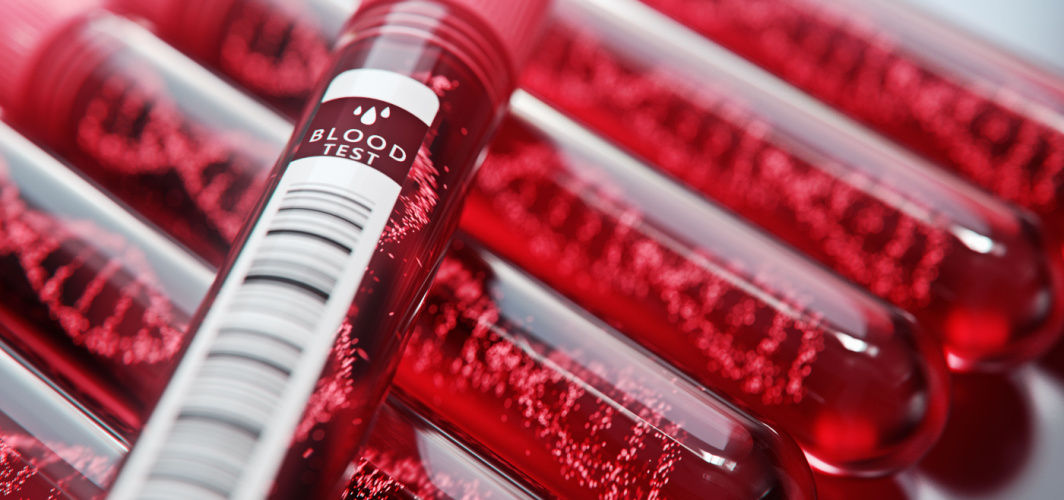General Health
Signs of Recovery from Typhoid: How to Track Your Progress and Know You’re Recovering
7 min read
By Apollo 24|7, Published on - 19 February 2025, Updated on - 20 February 2025
Share this article
0
0 like
%20(2).jpg?tr=q-80)
Typhoid fever, caused by Salmonella enterica bacteria, is a severe infectious disease that affects millions worldwide. While it can be treated with antibiotics, the recovery process can vary significantly from person to person. Understanding the signs of recovery is essential for patients and their caregivers, as it helps them track progress, manage symptoms, and determine when to seek further medical assistance.
What is Typhoid Fever?
Typhoid fever is an infection that typically spreads through contaminated food or water. It manifests as high fever, abdominal pain, headache, weakness, loss of appetite, and sometimes nausea and vomiting. If left untreated, typhoid fever can lead to severe complications, such as intestinal perforation or sepsis.
Treating typhoid fever generally involves antibiotics, and most patients recover fully with timely intervention. It is crucial to understand when the patient is recovering, when to seek additional care, and how to manage symptoms.
Stages of Typhoid Fever Recovery
The recovery from typhoid fever happens in several stages; each stage is marked by the improvement or decline of various symptoms. Here's a breakdown of the typical stages:
Stage 1: Acute Illness (First Week)
During the first week of illness, typhoid fever reaches its peak. Symptoms in this stage are generally severe. Symptoms include high fever, chills, fatigue, abdominal pain, and vomiting. If you consult a medical expert during this stage, antibiotics will generally be prescribed to alleviate the symptoms and prevent complications.
Stage 2: The Initial Signs of Improvement (Week 2)
By the second week of infection, if the antibiotics are working, you'll start to notice the first signs of recovery. The fever may begin to subside, and you may experience less fatigue. Other symptoms, such as nausea and abdominal discomfort, may decrease. You might still feel weak, but the worst of the illness should be over.
Stage 3: Steady Recovery (Week 3 and Beyond)
Most people will continue to see gradual improvements in the third week of illness. The fever is often gone, and the appetite starts to return. Energy levels will begin to rise, though you might still feel weak or tired at times. This is the stage where you will feel more like your usual self, although complete recovery may take time.
Stage 4: Full Recovery (4 to 6 Weeks After Treatment)
For most patients, full recovery takes 4 to 6 weeks. Most of the symptoms should have subsided by now, and any lingering fatigue or weakness will gradually diminish. Most people return to their usual activities within 4 to 6 weeks of starting treatment. However, some individuals may take longer, especially if they have a severe typhoid fever or complications arise.
Key Signs of Recovery from Typhoid Fever
The signs of recovery from typhoid fever can be subtle and often go unnoticed. They also differ from person to person. Understanding the key signs of recovery can help you track your progress and identify when you are improving. Here are the most common signs that you are recovering from typhoid fever:
1. Reduction in Fever
A fever reduction is one of the first and most noticeable signs of recovery. When the antibiotics start to work, the high fever characteristic of typhoid fever should begin to subside. It may take a few days for the fever to go away completely, but a gradual reduction strongly indicates that the body is fighting off the infection.
If you have a fever after a week of treatment, it is important to consult your doctor to ensure that the infection is responding to the prescribed antibiotics and that there are no complications.
2. Improved Appetite
Typhoid fever can cause a significant loss of appetite. Regaining your appetite is an important milestone in recovery.
When your body starts to heal, you’ll notice that food becomes more appealing, and your appetite begins to return. Initially, you may feel the need to eat small, light meals, but as your strength improves, your appetite will increase
A return to normal eating habits is a sign that your digestive system is healing and that you are recovering from the infection.
3. Increased Energy Levels
You may have felt overwhelmingly fatigued during the illness, to the point where even simple tasks felt exhausting. As your recovery progresses, you should begin to notice a steady increase in your energy levels. Although you may still experience some tiredness, especially after physical exertion, you should gradually feel more alert and energetic as the days go by.
4. Decrease in Abdominal Pain and Discomfort
Abdominal pain is a common symptom of typhoid fever, but as your condition improves, this discomfort should begin to lessen. While some residual stomach upset or bloating may persist for a while, the sharp pain and cramping should subside as the infection clears up.
5. Less Frequent Nausea and Vomiting
Nausea and vomiting are frequent symptoms of typhoid fever, especially in the early stages. As the infection improves, these symptoms should decrease. If nausea and vomiting continue for an extended period, it may indicate that further treatment is necessary, and you should seek medical attention.
6. Return of Normal Bowel Movements
Typhoid fever can disrupt normal bowel function, resulting in symptoms like diarrhoea or constipation. Return to normal bowel movements is an important sign of recovery.
7. Stabilisation of Blood Pressure and Heart Rate
Typhoid fever can cause fluctuations in blood pressure and heart rate, leading to symptoms such as dizziness, lightheadedness, and a racing heartbeat. These symptoms should resolve as you recover, and your blood pressure and heart rate will return to normal.
8. Clearer Skin and Less Facial Pallor
During the illness, the body’s immune system works hard to fight the infection, making you look pale and weak. As you recover, your skin will begin to look healthier, and you may notice an improvement in your complexion. A reduction in facial pallor and a healthier appearance are signs of a body on the mend.
How to Support Your Recovery from Typhoid Fever
It’s essential to follow your doctor’s recommendations and take steps to support your health during the recovery process. Here are some tips for a successful recovery:
- Complete your antibiotic course: Even if you start feeling better, completing the entire course of antibiotics as your doctor prescribes is essential. Stopping the medication can cause the infection to return or lead to the development of antibiotic-resistant bacteria.
- Stay hydrated: Dehydration is common during typhoid fever, especially if you experience fever, vomiting, or diarrhoea. Drink plenty of fluids such as water, oral rehydration solutions, or clear soups to stay hydrated and help your body recover.
- Rest and sleep: Rest is crucial during the recovery phase. Your body needs time to heal, and sleep plays a vital role in supporting your immune system. Ensure you get plenty of rest and avoid strenuous activities until you feel fully recovered.
- Follow a nutritious diet: For recovery, it is important to eat nutrient-rich foods. One should start with easily digestible foods like porridge, rice, and boiled vegetables. As you regain your strength, you can gradually begin a balanced diet.
- Monitor symptoms: Track any changes in your symptoms. If case of sudden change or new symptoms like persistent fever, severe abdominal pain, or unusual fatigue, seek medical advice immediately.
- Follow-up care: Following up with your healthcare provider for check-ups after completing your antibiotic treatment is essential. This ensures that the infection has cleared completely and that no complications have arisen.
When to Seek Medical Attention
While most people recover from typhoid fever with appropriate treatment, there are certain situations when you should seek medical attention:
- If you experience a high fever that doesn't subside after a few days of treatment.
- If your abdominal pain becomes severe or persistent.
- If you develop unusual or severe symptoms, such as confusion, difficulty breathing, or extreme weakness.
- If you experience dehydration despite drinking fluids or have difficulty keeping food down.
Conclusion
Typhoid fever is a serious illness, but most people recover completely with proper treatment and care. Recognising the signs of recovery can help you track your progress and feel more confident about your path to health. Keep in mind that recovery from typhoid fever can take time, so be patient with yourself and seek medical advice whenever necessary. If you’re still experiencing symptoms or are unsure about your recovery, don’t hesitate to contact a healthcare provider. Book a Typhoid Test test with Apollo Hospital if you suspect you may have typhoid fever or need further medical guidance. Timely intervention is key to ensuring a safe and complete recovery.
General Health
Leave Comment
Recommended for you

General Health
What Does A Diagnostic Ultrasound Do?
Diagnostic ultrasound or sonography, uses sound waves to create images of internal organs and tissues. It aids in diagnosing a wide range of conditions and diseases. There are many different types of diagnostic ultrasounds that can be conducted for various purposes. Read on to learn more about diagnostic ultrasound and its applications.

General Health
Why Is It Important To Fast Before Specific Blood Tests?
Discover the reasons behind fasting before blood tests, the tests that require it, and how to prepare for them

General Health
Could Tonsilitis Be Causing That Sore Throat?
Tonsillitis either occurs due to infection by viruses or bacteria. Up to 70% of the cases of tonsillitis are caused by viruses that cause infections such as cold or flu.
Subscribe
Sign up for our free Health Library Daily Newsletter
Get doctor-approved health tips, news, and more.
Visual Stories

Could There Be More to Your Snore?
Tap to continue exploring
Recommended for you

General Health
What Does A Diagnostic Ultrasound Do?
Diagnostic ultrasound or sonography, uses sound waves to create images of internal organs and tissues. It aids in diagnosing a wide range of conditions and diseases. There are many different types of diagnostic ultrasounds that can be conducted for various purposes. Read on to learn more about diagnostic ultrasound and its applications.

General Health
Why Is It Important To Fast Before Specific Blood Tests?
Discover the reasons behind fasting before blood tests, the tests that require it, and how to prepare for them

General Health
Could Tonsilitis Be Causing That Sore Throat?
Tonsillitis either occurs due to infection by viruses or bacteria. Up to 70% of the cases of tonsillitis are caused by viruses that cause infections such as cold or flu.